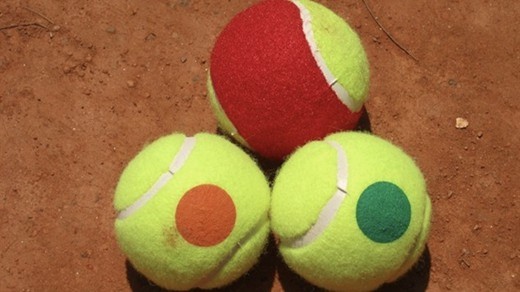Our player is making progress in learning the one-handed backhand. Now, we start feeding her balls from the other side of the court, first from the mid-court and then from the baseline. The next step will be to rally, namely, hit the ball to each other from each side of the court. First, they will do it using soft balls with 50% pressure. The last step will be to rally from the back of the court with normal balls.
The right distance and height of the ball
The student will try to automate the one-handed backhand motion and discover the basic footwork, trying to get to the ball at the right distance and hit it at the correct height. The optimal distance is the one that allows the player to hit comfortably, that is, when they do not have to overly bend their arm or stretch their body to reach the point of impact.
The ideal height to learn to hit consistently is waist-level, so the student must learn to let the ball drop to this height, which can be achieved by taking a few steps back. He is encouraging the player to explore basic tennis footwork of how to move forwards, backwards and to the sides on their own.
Two ways of being coached
There are two ways a player can practice a stroke automation with their coach, one is based on continuously feeding the balls from the basket and the other one is rallying, meaning hitting the same ball back and forth with the coach. In this video Javi is using both techniques to coach our player.
Feeding
- different balls are fed by the coach directly from the basket usually at the same speed
- coach can feed by hand or using the racket
- both soft and normal balls can be used
- it is a good way of practicing automating the technique of the stroke
Rallying
- the coach and the player are hitting the same ball to each other usually at different speeds
- it is more similar to a real game play where both players exchange the ball
- both soft and normal balls can be used
- it is good way of practicing footwork and mobility
We will be covering different feeding methods in future tennis lessons.
Soft balls vs normal balls
There are three main kinds of softer tennis balls: red balls with only 25% of air pressure, orange balls with 50% of the pressure and green balls with 75% of the pressure of a standard tennis ball. It is much easier to play with them because they are slower and bounce lower. Consequently, they are mainly used in mini tennis with kids; however, sometimes we also use them with adult beginners during their first few lessons.

Key takeaways
The main learning points from this tennis lesson for beginners are:
- Start from the ready position, do the split-step and turn your shoulders for backswing as soon as possible.
- The optimal distance to hit one-handed backhand is the one that allows the player to hit comfortably, not too close or too far from the ball.
- The ideal height to hit one-handed backhand is the player's waistline.
- In the beginning, when you learn to rally use soft balls that are slower and bounce less.
- Practice automating the motion by positioning yourself at different distances to the net, mid-court and at the back.
A beginner should start learning to rally using softer tennis balls!
In this video, Javi is demonstrating five exercises to practice one-handed backhand basic footwork. In the first two he is feeding the balls to the player and in the other three they are rallying. Each time the player has to arrive to the ball at the right distance and hit the ball back.
Exercise 1
Practice the preparation and swing from mid-court
2 sets of 15 balls
Exercise 2
Practice the backhand movement from the baseline
3 sets of 15 balls
Exercise 3
Rally with softer balls from mid-court
5 minutes
Exercise 4
Rally with softer balls from the baseline
5 minutes
Exercise 5
Rally with normal balls from the baseline
10 minutes
